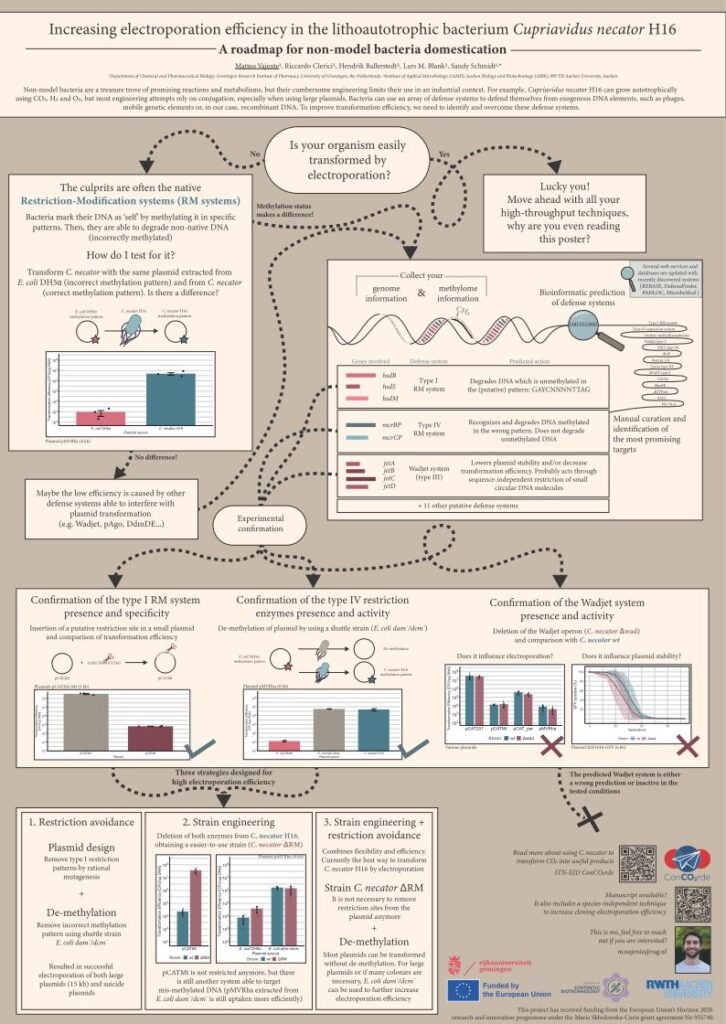Climate change is an urgent and collective challenge, and several solutions are necessary to reduce CO2 emissions or to increase carbon capture and utilization from the atmosphere. Nature has been evolving CO2 utilization pathways for billions of years, and biotechnology could be used to exploit them and transform CO2 into useful molecules for human applications. Cupriavidus necator H16 is one of the most studied autotrophic microorganisms, able to convert H2, CO2 and O2 into biomass and bioplastic. It has been engineered for the production of several compounds, but the slow and cumbersome engineering process limits synthetic biology applications. In his project, Matteo developed an easy-to-use inducible expression plasmid compatible with C. necator as well as other organisms, which allow for quick cloning and expression of genes of interest using Golden Gate assembly. The transformation bottlenecks have also been investigated and characterized, and it is now possible to reliably transform expression plasmids and even suicide plasmids by electroporation. This considerably shortens the engineering time and allows quicker testing and screening of potential strains. While more work is ongoing towards the development of genetic tools for C. necator, the current results can be found in a recently published study (DOI: 10.1021/acssynbio.4c00380). The pMVRha plasmid is also available on Addgene (#229553). This study highlights the steps that can be undertaken to increase electroporation efficiency in other non-model bacteria, using a combination of bioinformatic prediction and experimental confirmation via ad-hoc plasmids.


Vajente, M., Clerici, R., Ballerstedt, H., Blank, L. M. & Schmidt, S. Using Cupriavidus necator H16 to Provide a Roadmap for Increasing Electroporation Efficiency in Nonmodel Bacteria. ACS Synth. Biol. (2024) doi:10.1021/ACSSYNBIO.4C00380.
Link to publication:10.1021/acssynbio.4c00380
Vajente M, Ghirardi M, Schmidt S. Enzyme Expression in Cupriavidus Necator H16 for Whole-Cell Biocatalysis. Methods in Enzymology, Academic Press, 2025. In press, available online February 25, 2025 doi:10.1016/bs.mie.2025.01.079
Link to book chapter:10.1016/bs.mie.2025.01.079
Please fiind all ConCO2rde publications and data (coming soon) at our ConCO2rde community at Zenodo:

